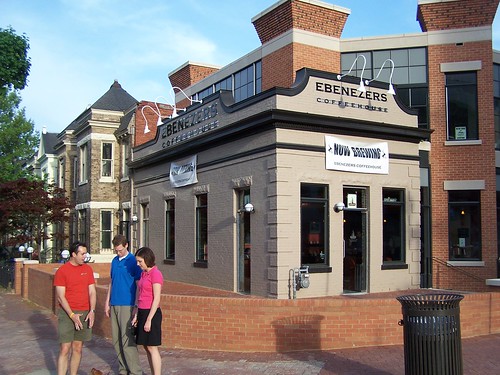Integrating federal facilities into communities to support placemaking: Thursday April 21st
 It happens that I am part of a presentation in Baltimore at the same time as the session, "Agents of Change: Integrating Federal Facilities into Local Communities," sponsored by the National Capital Planning Commission and others. Otherwise I'd go, even though I am not very hopeful. As long as you have high security requirements for federal buildings, it is almost impossible to integrate these facilities into communities in ways that build placemaking.
It happens that I am part of a presentation in Baltimore at the same time as the session, "Agents of Change: Integrating Federal Facilities into Local Communities," sponsored by the National Capital Planning Commission and others. Otherwise I'd go, even though I am not very hopeful. As long as you have high security requirements for federal buildings, it is almost impossible to integrate these facilities into communities in ways that build placemaking.From email:
Thursday, April 21, 2011
8:00 - 8:30 am: networking
8:30 - 9:45 am: program
Location: General Services Administration Headquarters Auditorium
1800 F Street, NW, Washington, DC
Metro: Farragut West
NCPC and the ULI Washington District Council invite you to join us on Thursday as Doug Firstenberg, StonebridgeCarras LLC; Jay Fisette, Arlington County Board; Bob Peck, General Services Administration; and Lisa Swoboda, State of Maryland examine evolving federal workplaces and their influence on host communities. Cheryl Cort from the Coalition for Smarter Growth will moderate.
Discussion topics include how the location, design, and activities of federal facilities can shape the region's growth and impact local neighborhoods, what kinds of innovative strategies can contribute to community and regional goals, and whether government location policies intended to maximize the federal workforce's size in Washington should be modified to include transit-oriented development sites throughout the region.
Note that for a few years, I've said that the Transportation Element of the Federal Elements of the DC Comp. Plan, which are produced by the National Capital Planning Commission, should require that all federal facilities are located at high quality transit sites.
The GSA did a project with the Project for Public Spaces a few years ago on this same topic, and they produced a guidebook, Achieving Great Federal Public Spaces: A Property Manager's Guide.
For example, I don't think that the outbuilding retail on 2nd Street NE, adjacent to the ATF building and the north entrance of the "New York Avenue" Metro functions very well. And the big hulking buildings in Southeast and Southwest DC, not to mention along Pennsylvania Avenue, don't contribute very much to an active and vibrant street life.
Although it is true that on the margins, the workers in such buildings can support adjacent businesses. E.g., I never expected the Ebenezer coffee shop to get any business from the SEC workers at Station Place, and I was wrong. They will venture out a few hundred feet and patronize a local business, if it is easy and convenient and the local business doesn't suck.

Labels: federal policies and the city, urban design/placemaking



0 Comments:
Post a Comment
<< Home